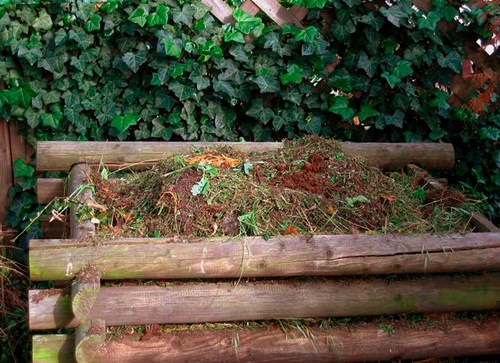Today we are increasingly concerned about the quality of our food. We look for fruits, vegetables and organic vegetables, which have been obtained in the most natural way possible, without chemical fertilizers, pesticides or pesticides ...
Many people, lovers of nature and a healthy diet, have opted to cultivate themselves, in gardens, farms, gardens or small urban gardens, vegetables for their own consumption.
According to Wikipedia "The term compost derives from the Latin compositus and its meaning would be "put together."
Compost, also called compound or compound, is an organic fertilizer that is obtained from compounds that form or formed part of living beings in a set of products of animal and plant origin; Constitutes a "medium degree" of decomposition of organic matter, which in itself is a magnificent organic fertilizer for the land, and manages to greatly reduce the waste.

How does it work?
Microorganisms such as bacteria and invertebrates such as earthworms and insects use plant and animal residues as well as those derived from organic matter as food. As they decompose them, the excess nutrients (nitrogen phosphorus and sulfur), essential for the growth of plants, are released into the soil and can be used by them. This process enriches the nutrient soil and prevents its exhaustion.
We offer you a simple way to make compost, one of the best organic fertilizers in existence. Farm residues (poultry, horses, cows, sheep or pigs) can be produced from crop residues, household organic waste and paper. They will achieve a more fertile land and greater productivity through the compost and the undeniable help of soil organisms and microorganisms.
1-The compost is the physical place where you make your compost, can be on the ground, you can use a wooden box of fruit, make it yourself with recycled materials or buy it made. Their size will depend on the space you have available.
2-We must place in the base of the compost, a layer of about 20 cm, straw, branches or any other material that allows air to circulate and does not crush easily. This layer should be in direct contact with the soil for organisms to enter more easily, otherwise you must add a layer of 3 cm of good soil on the bottom of the compost and on top of it, place the layer of straw The branches.
3-Introduce the remains of organic materials taking into account that we must always mix the materials of slow and rapid composition and that they should be as crushed as possible. The first time you fill your compost, you must fill it at least halfway, and every time you throw the debris, put a layer of dry leaves on top.
4-The compost must always be wet. The ratio between wet and dry materials is 2/1. The material must be moist but not free of liquid.
5-Every time you introduce your wastes, you should mix them with the old material, leaves and straw.
What can I use to make compost?
- Rapid decomposition materials: Fresh leaves, grass residues, livestock manure, young weeds.
- Slow decomposition material: Fruit and vegetable pieces, bag of infusions and coffee scraps, straw and old hay, plant remains, straw manures (horses, donkeys and cows), old flowers and potted plants, stripping of young hedges , Perennial weeds, hamster beds, rabbits and other herbivorous domestic animals.
- Very slow decomposition material: Autumn leaves, hard hedge clearing, pruned branches, untreated sawdust and wood shavings, eggshells and nuts, natural wool and threads, hairs and feathers, fruit bones (peach, Avocado, olives, etc.)
-Other materials you can use: wood ash (sprinkle in small quantities) cardboard, egg cartons, napkins, paper bags and containers, newspapers (in small quantities).
- To avoid: meat, fish, products derived from milk, products containing yeasts or fats.
- Do not use under any circumstances: coal and coke ash, dog and cat feces, disposable diapers, illustrated magazines, vacuum cleaners, cigarette filters, synthetic fabrics.

